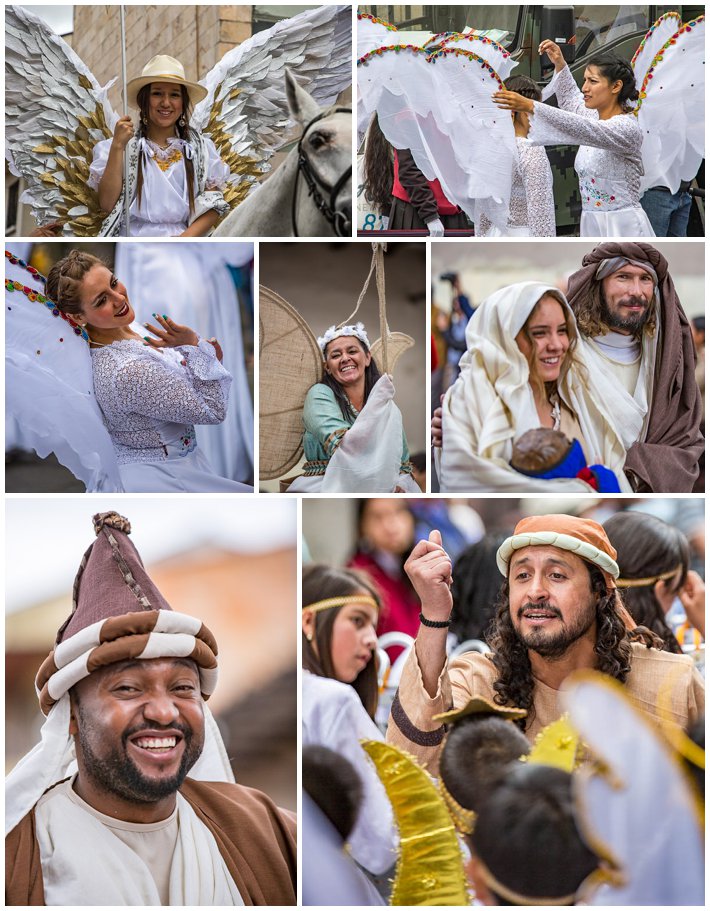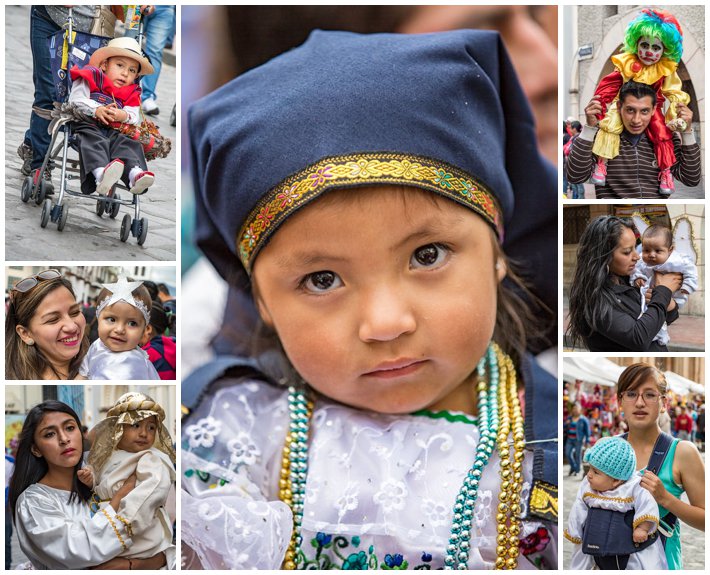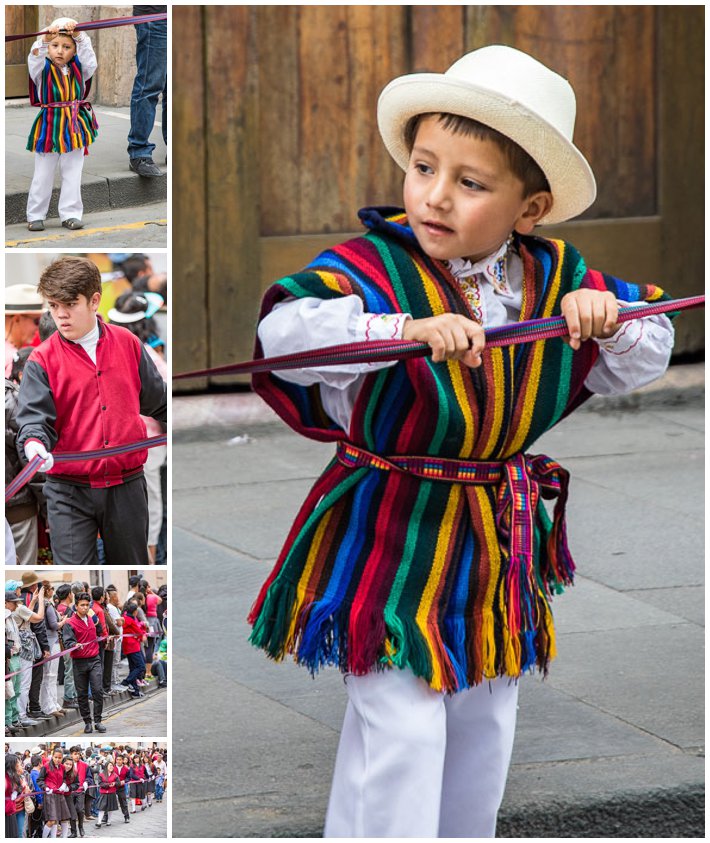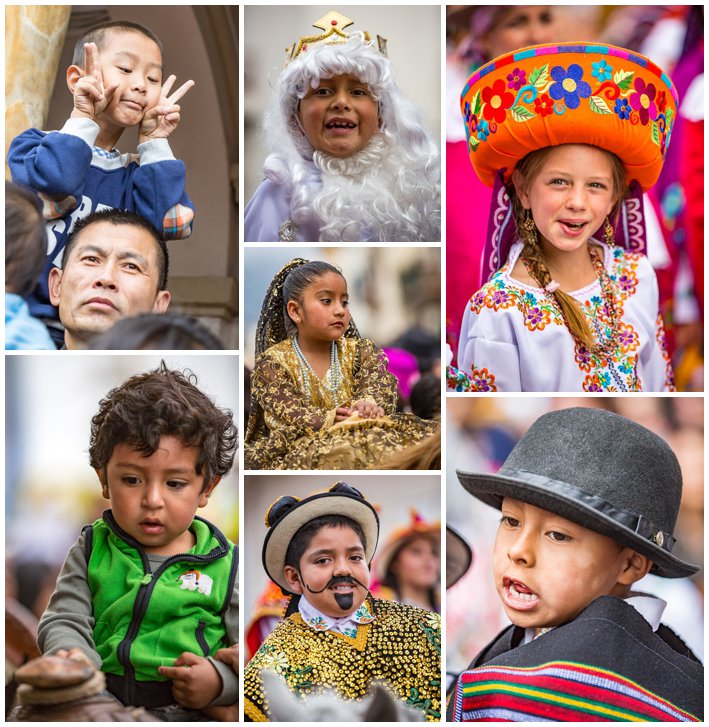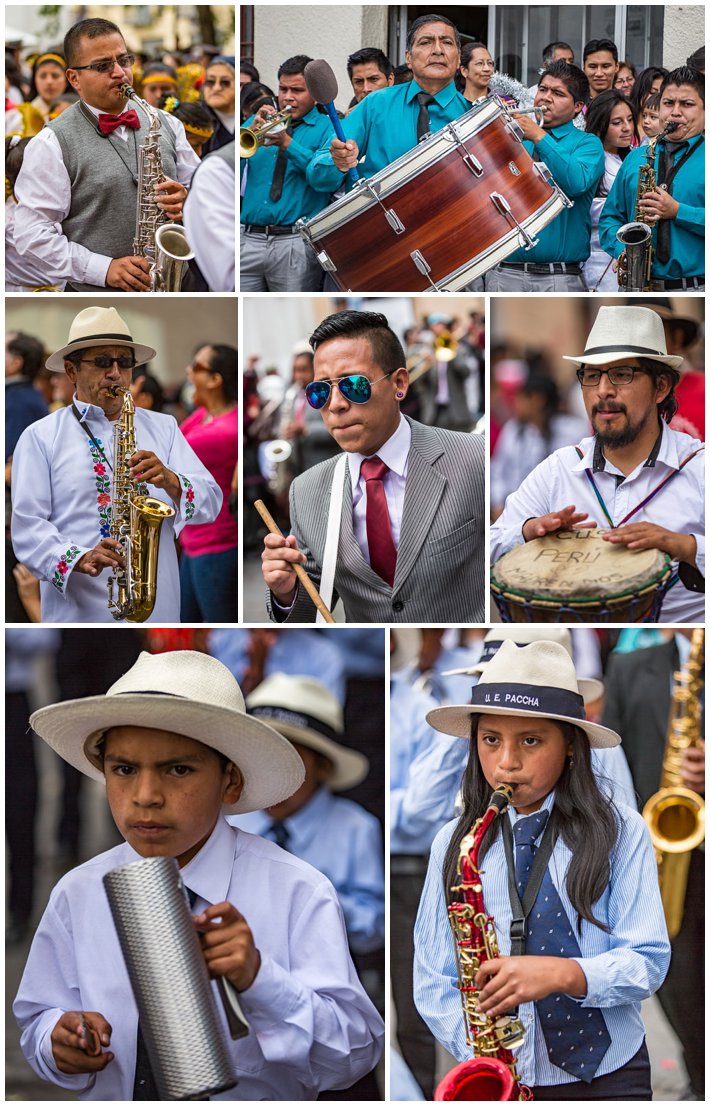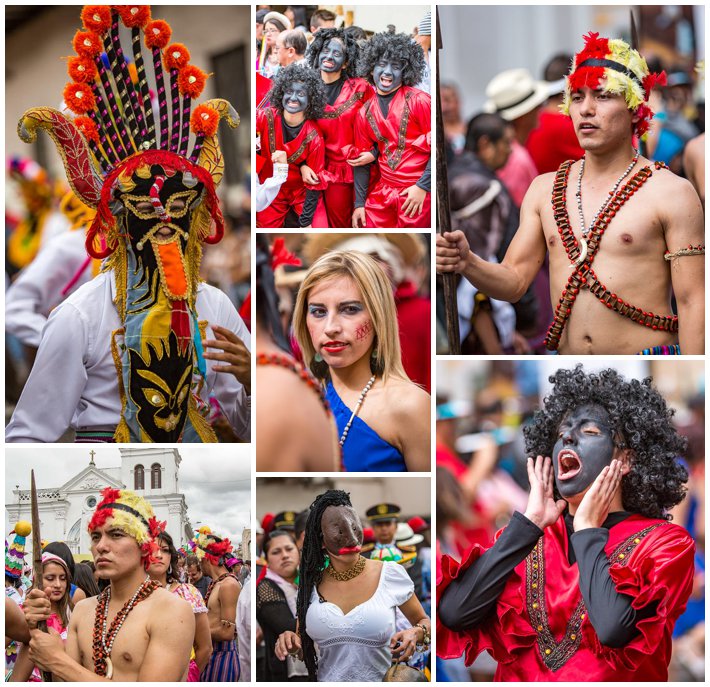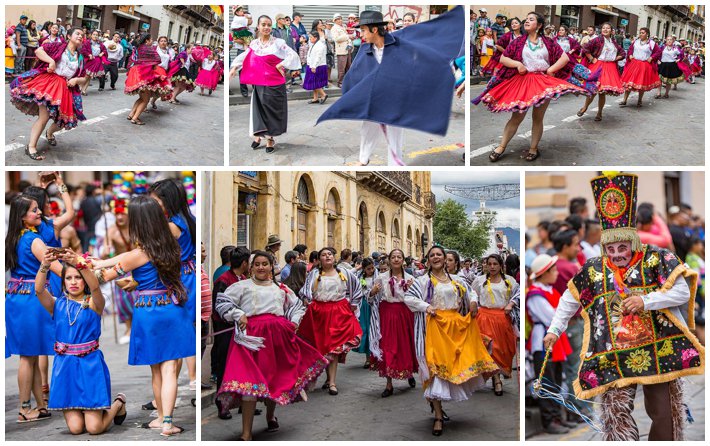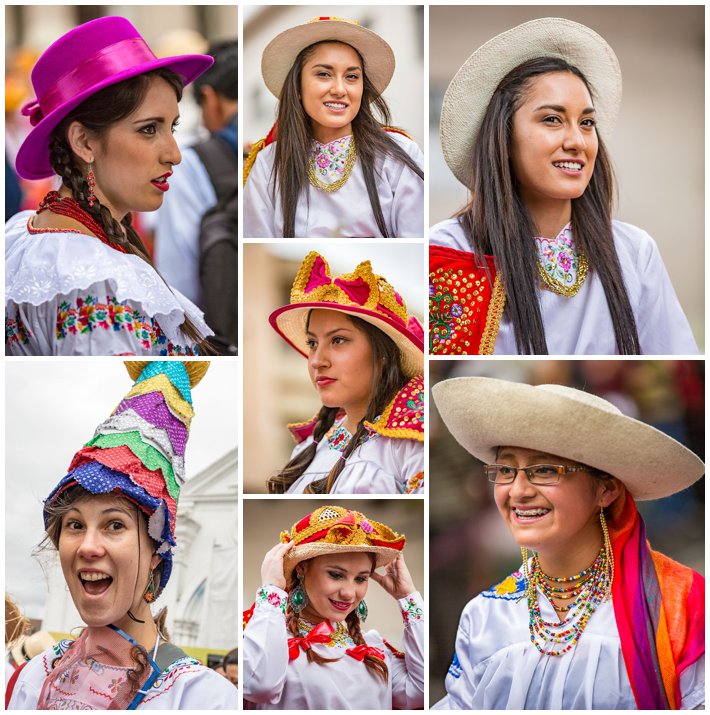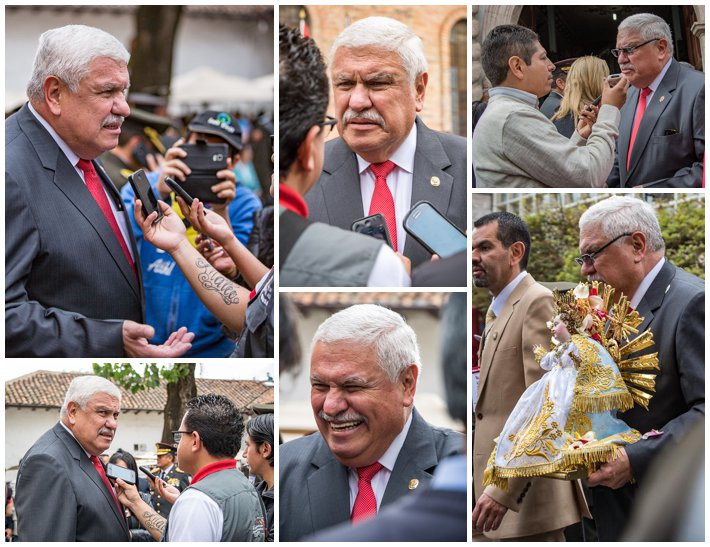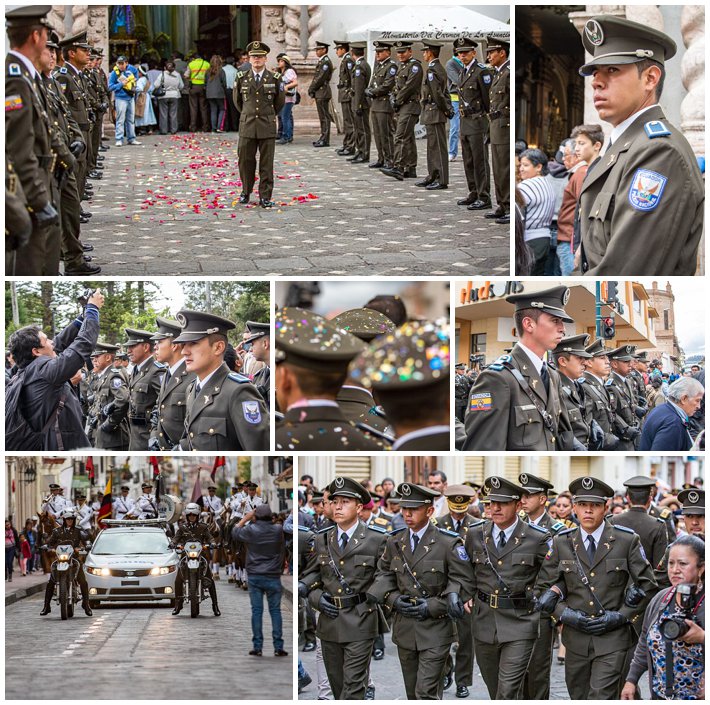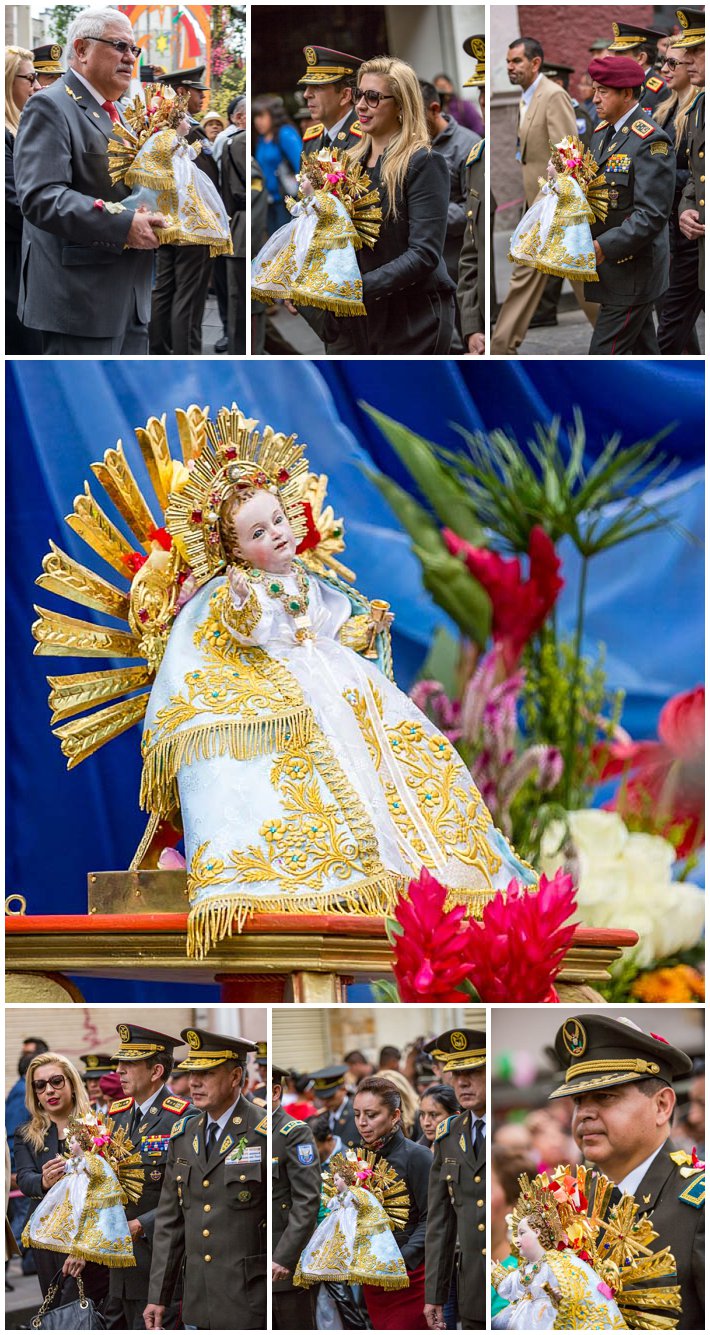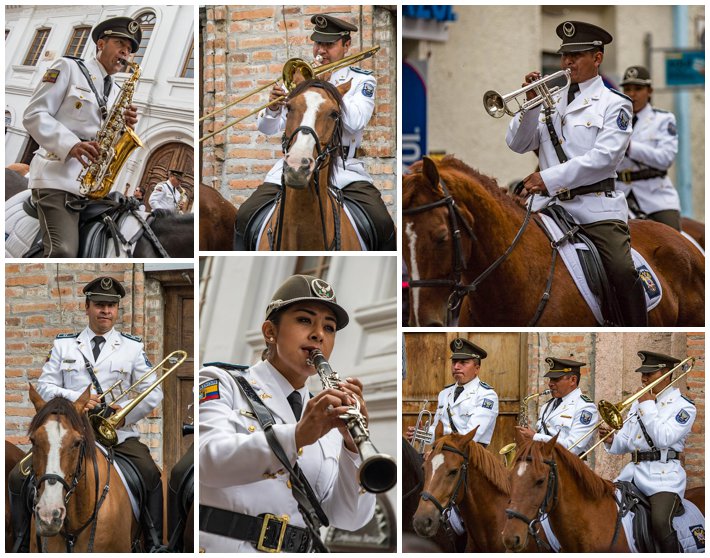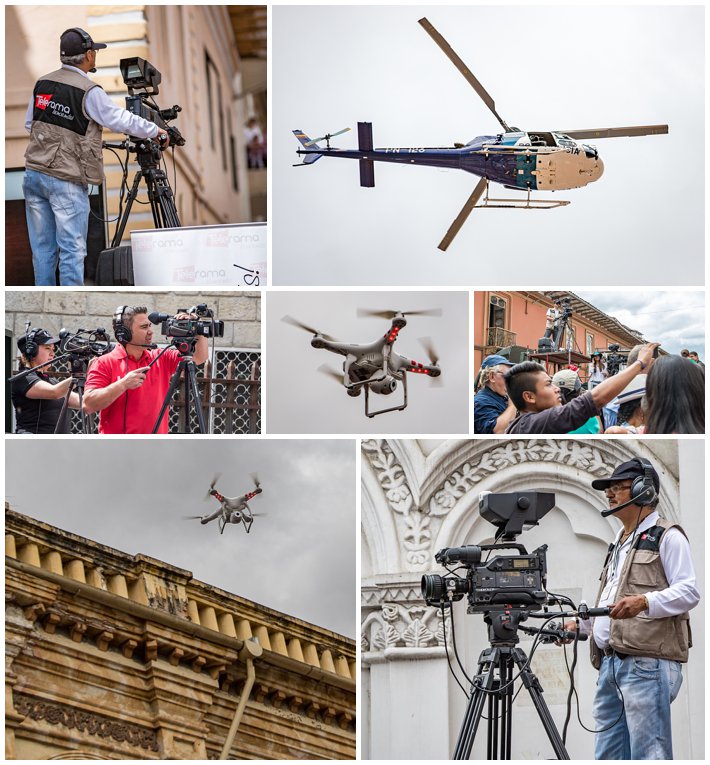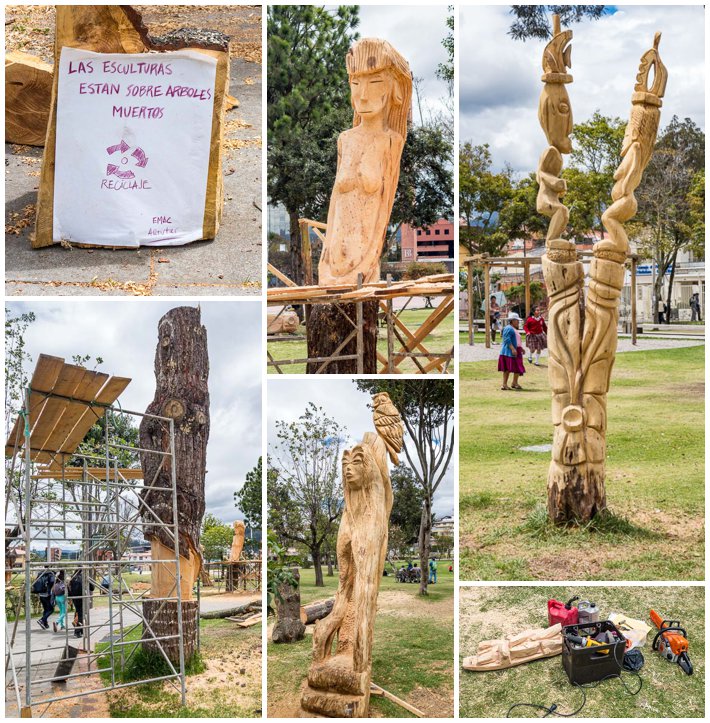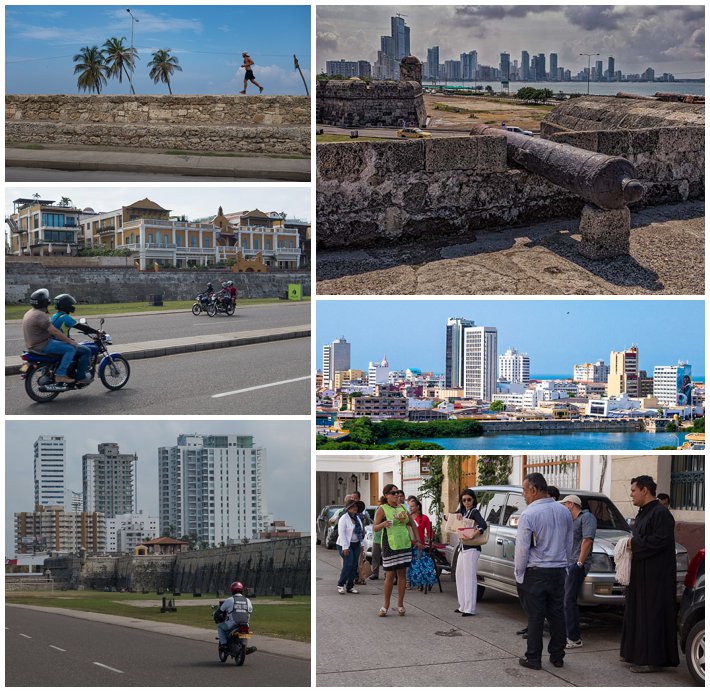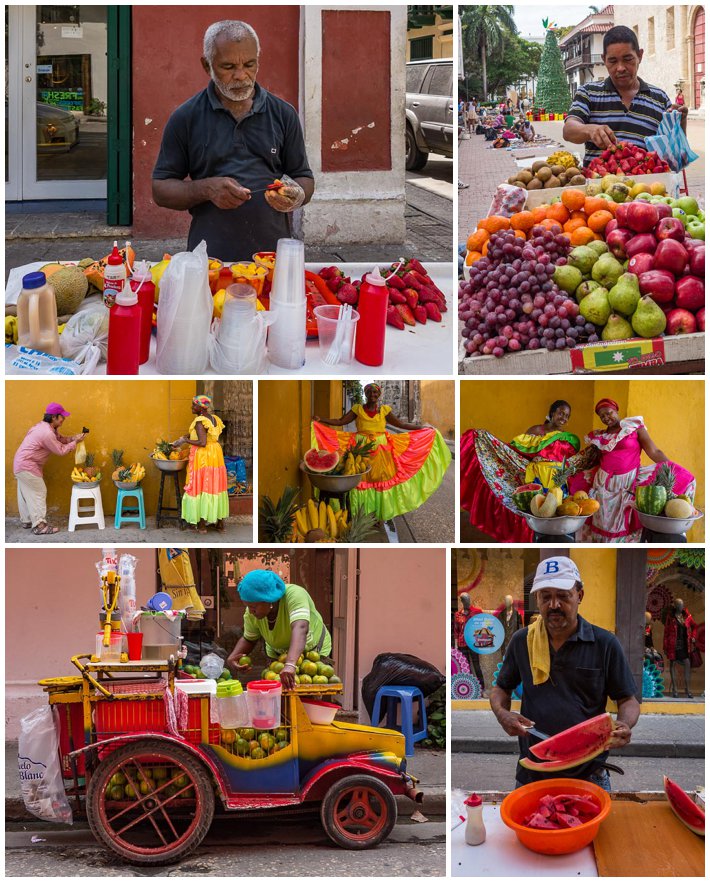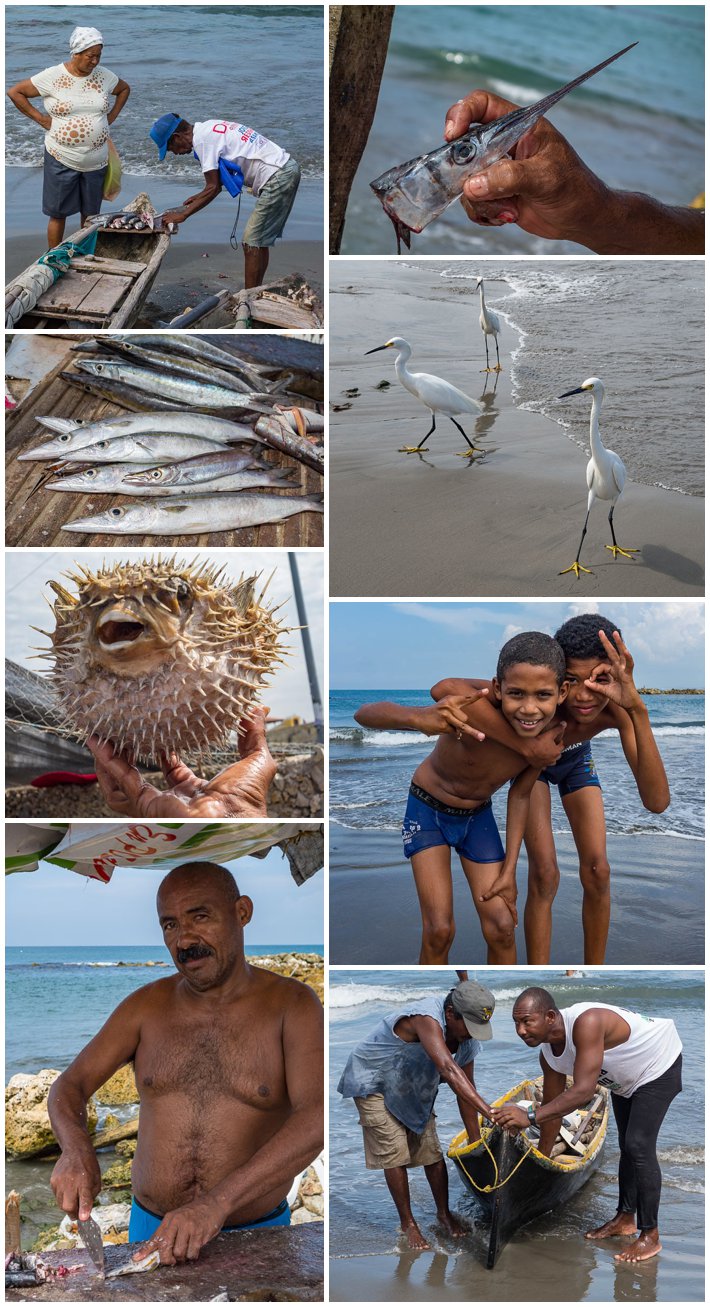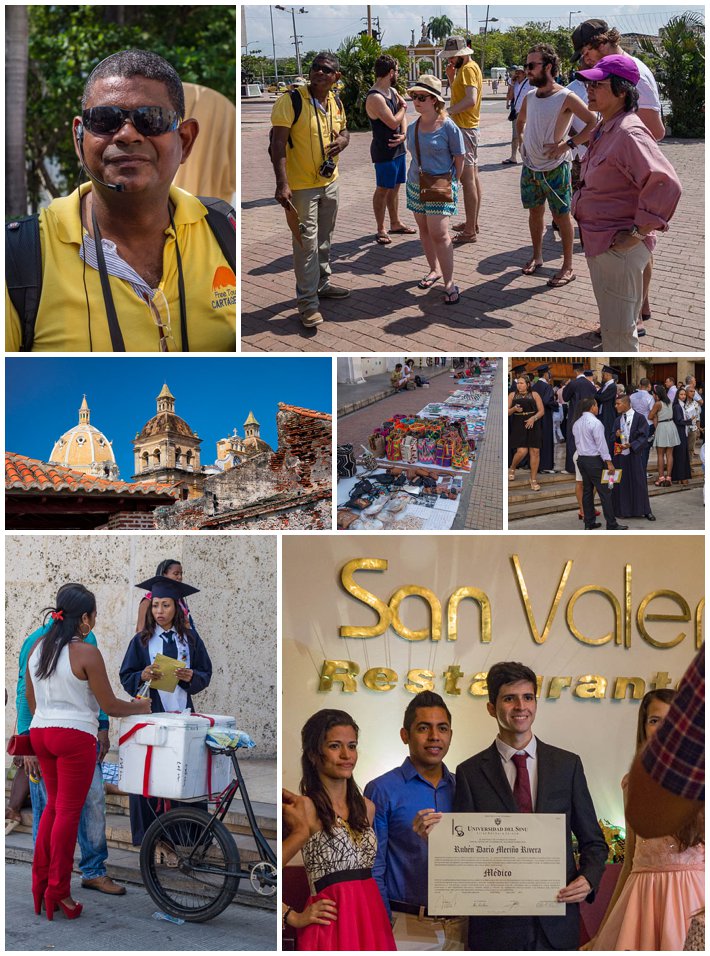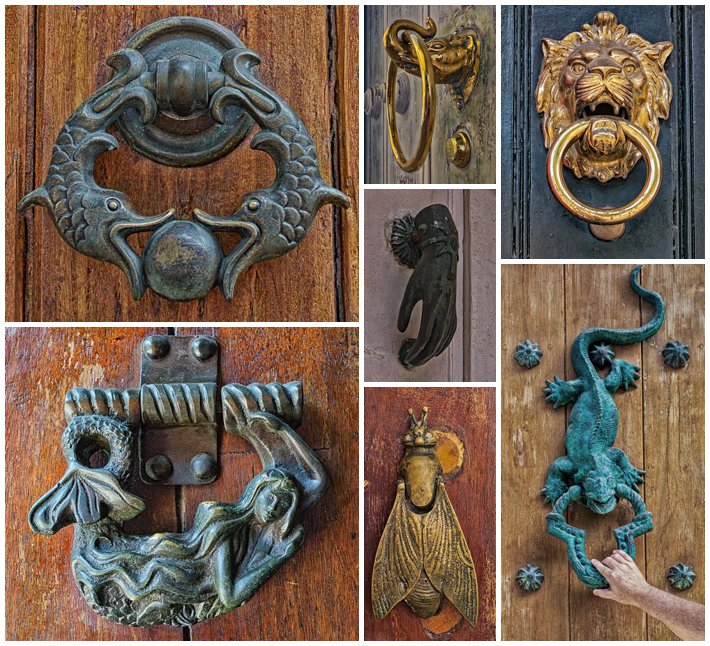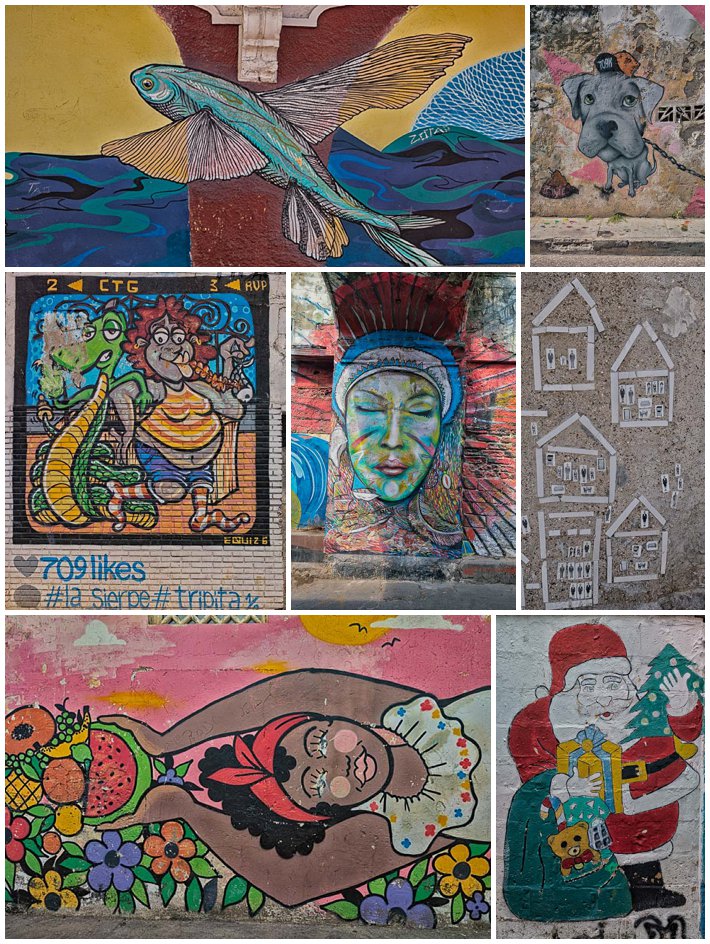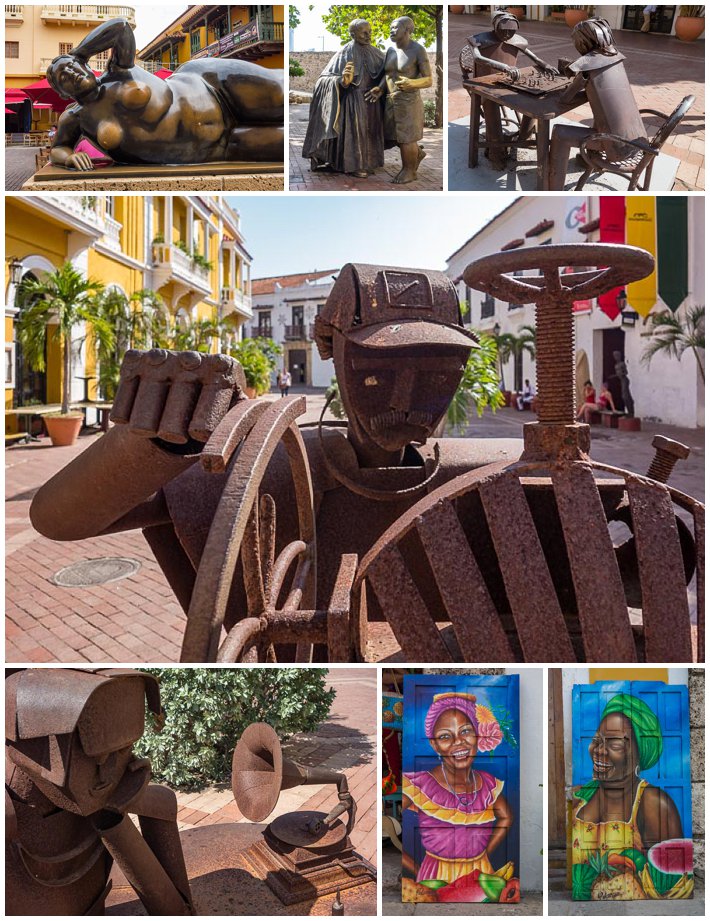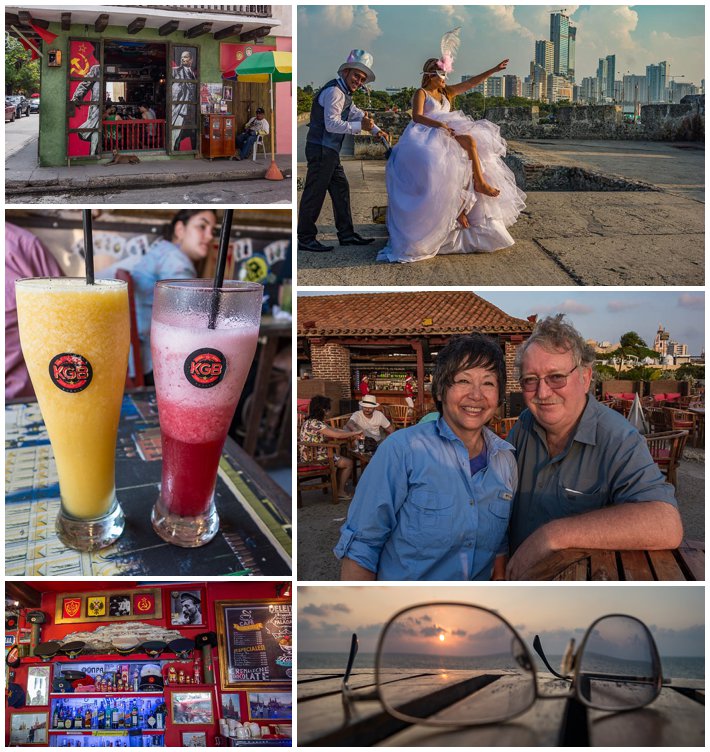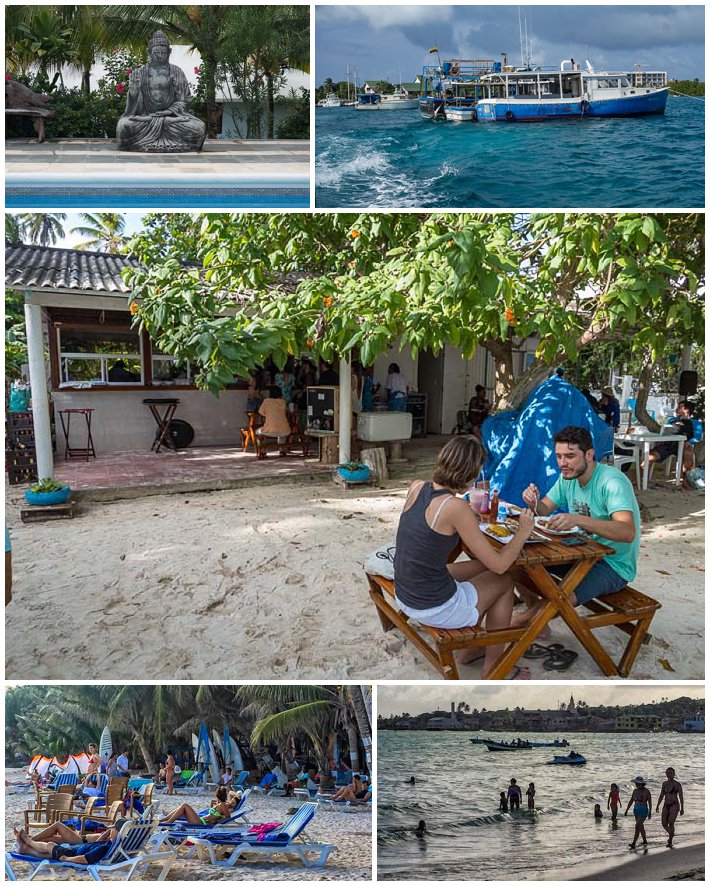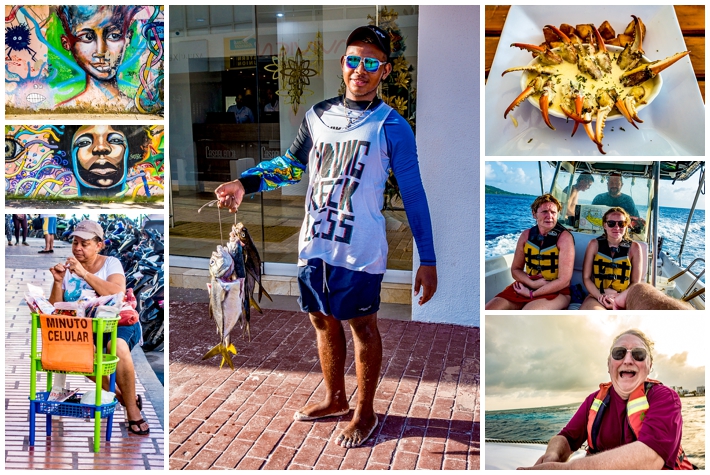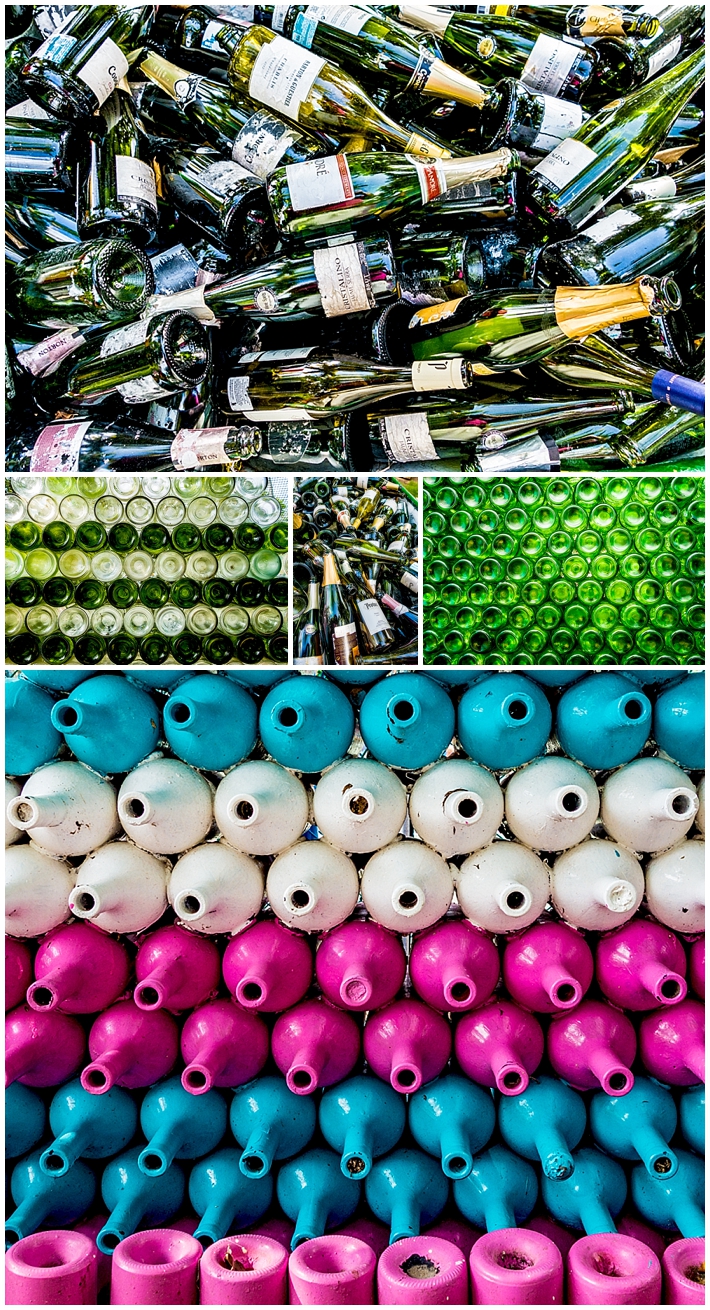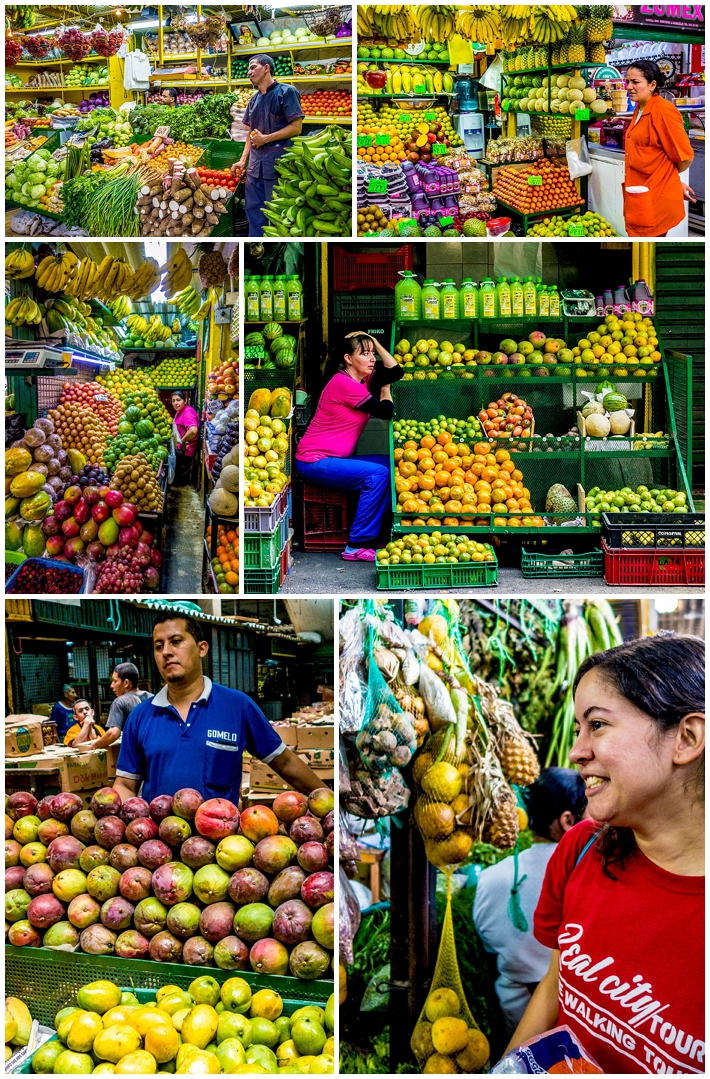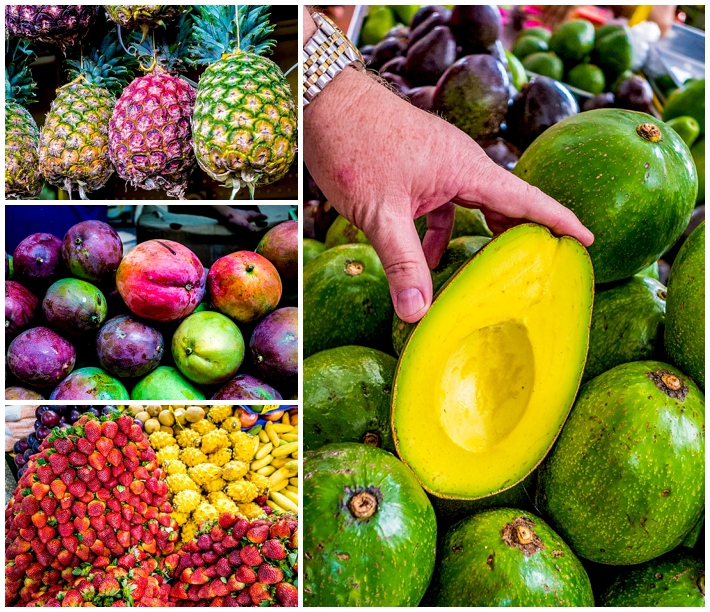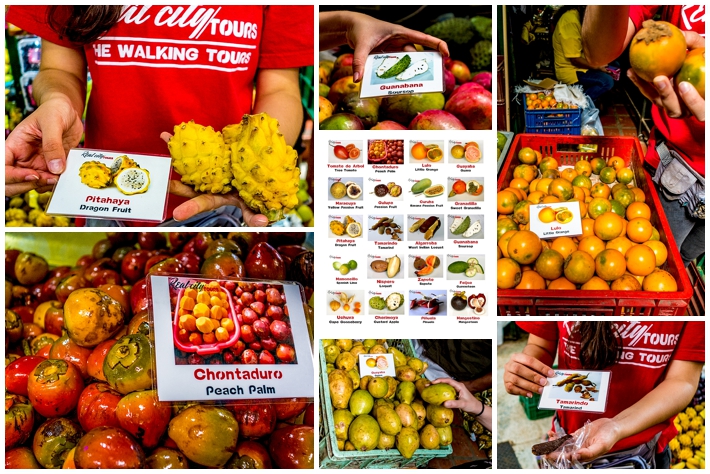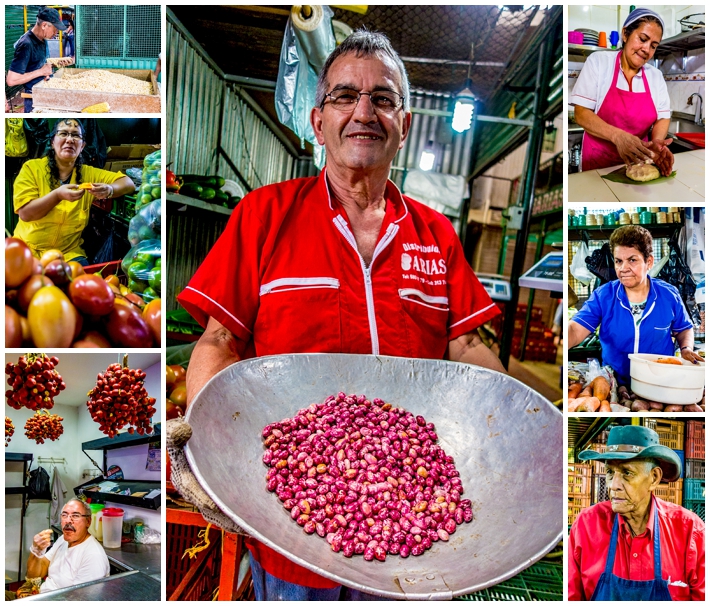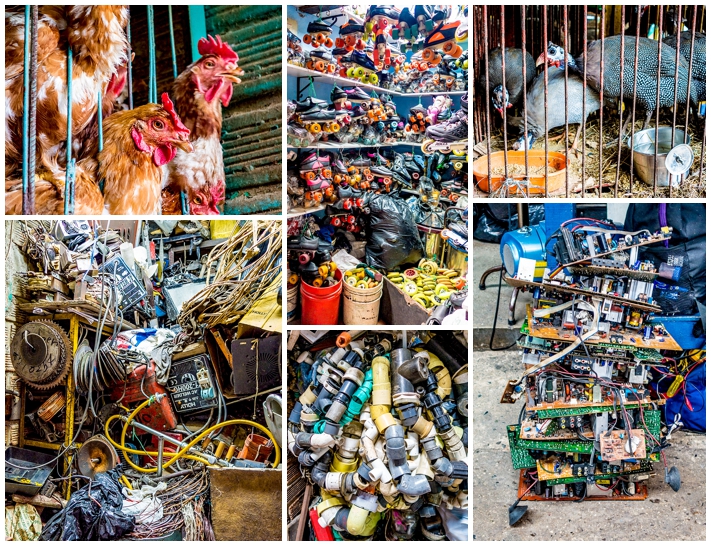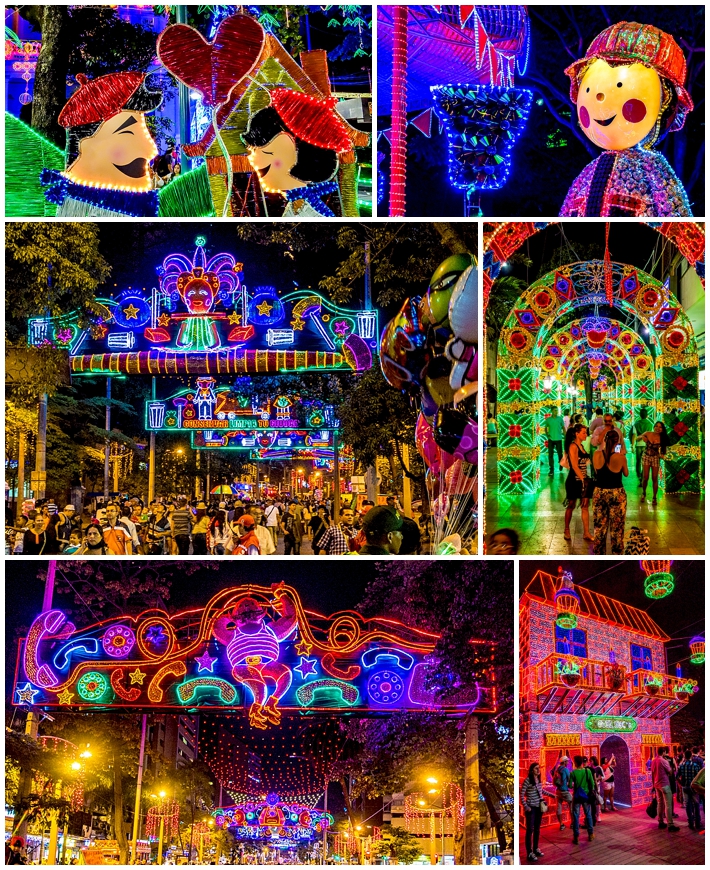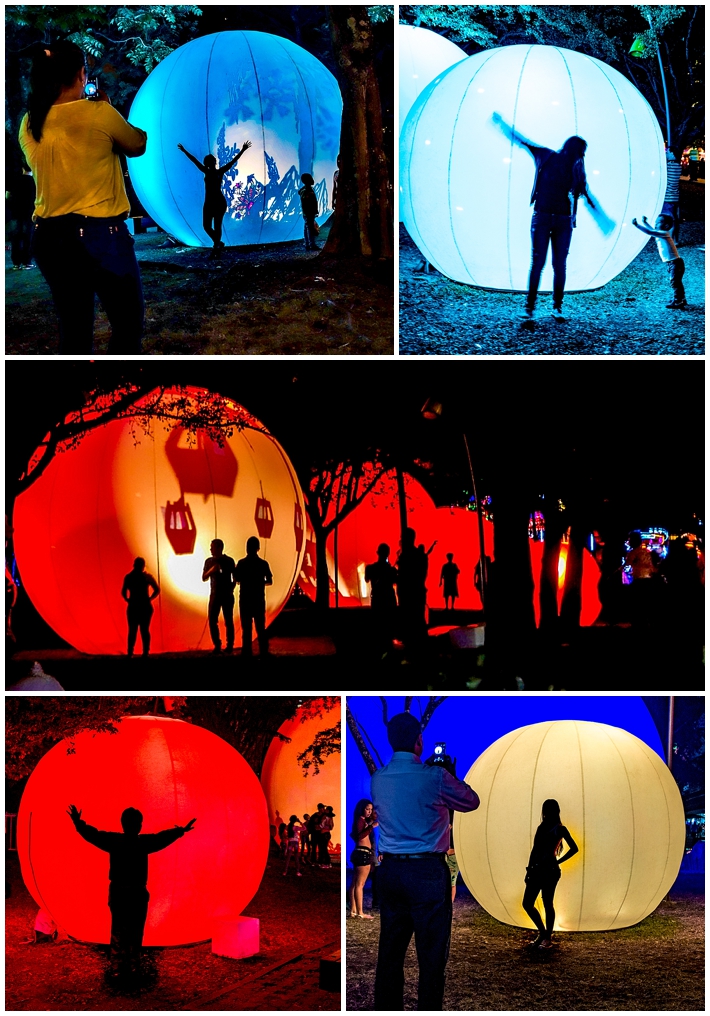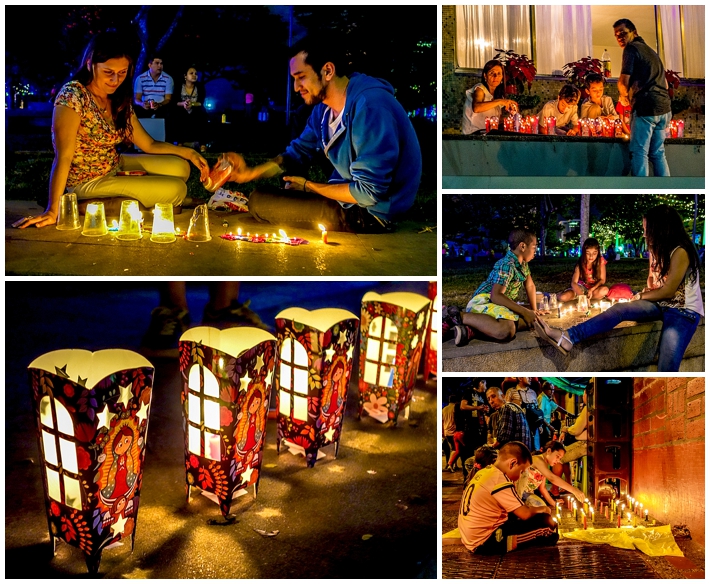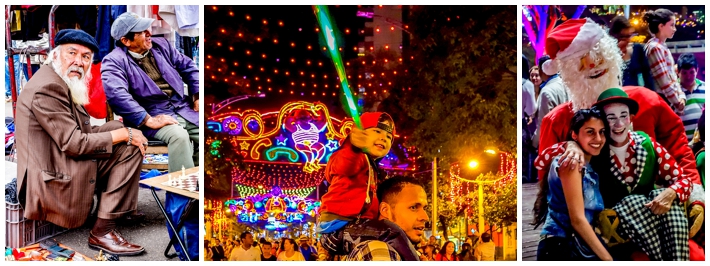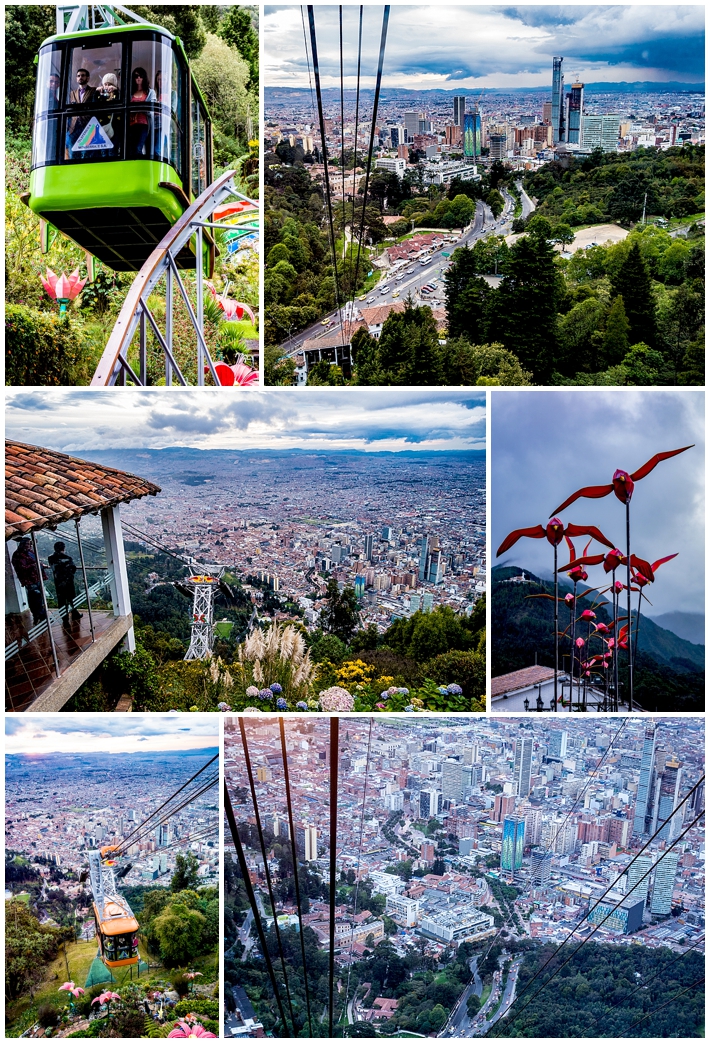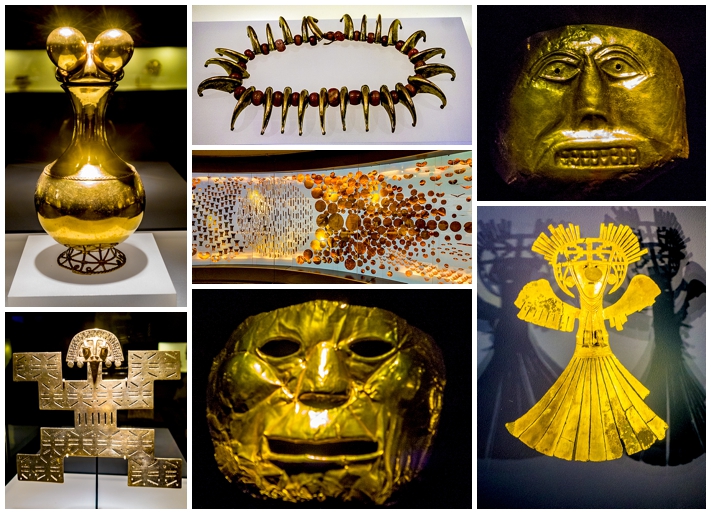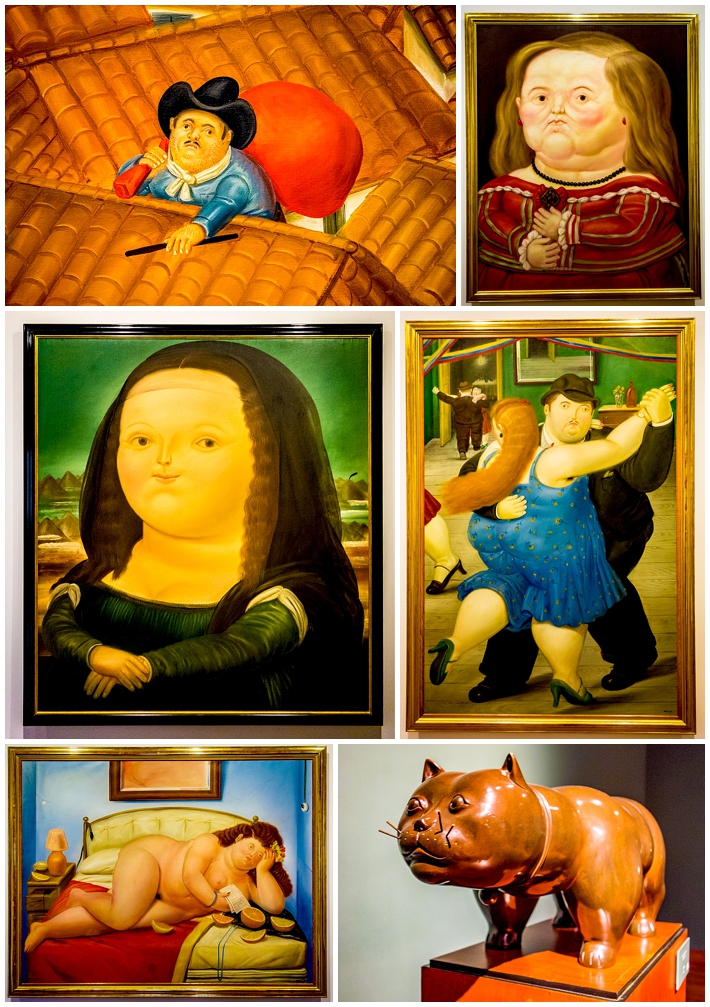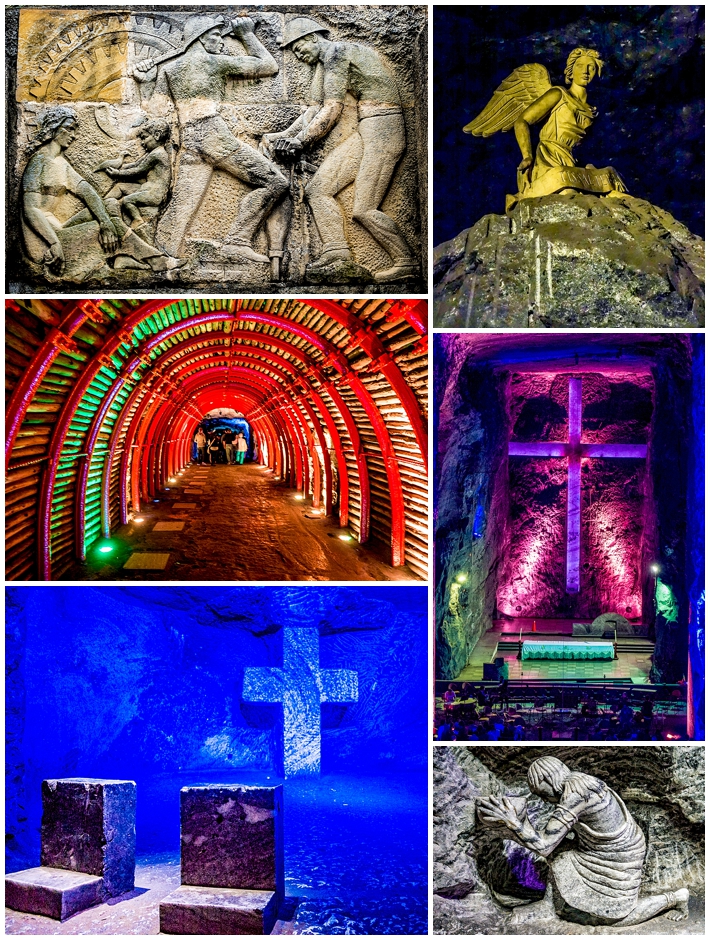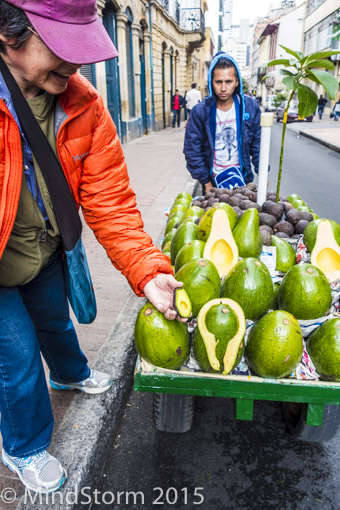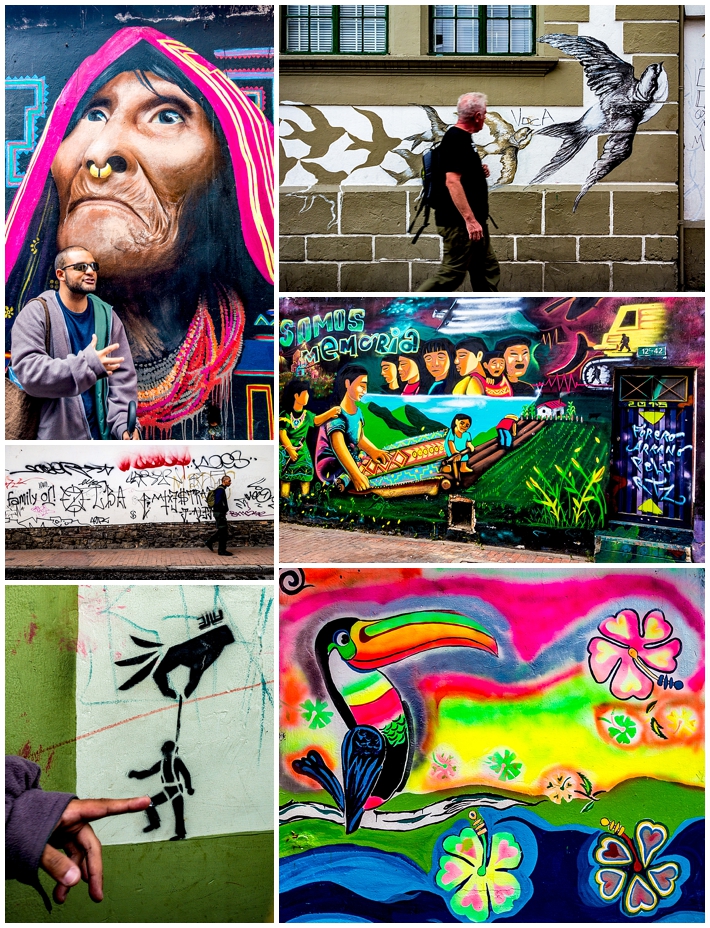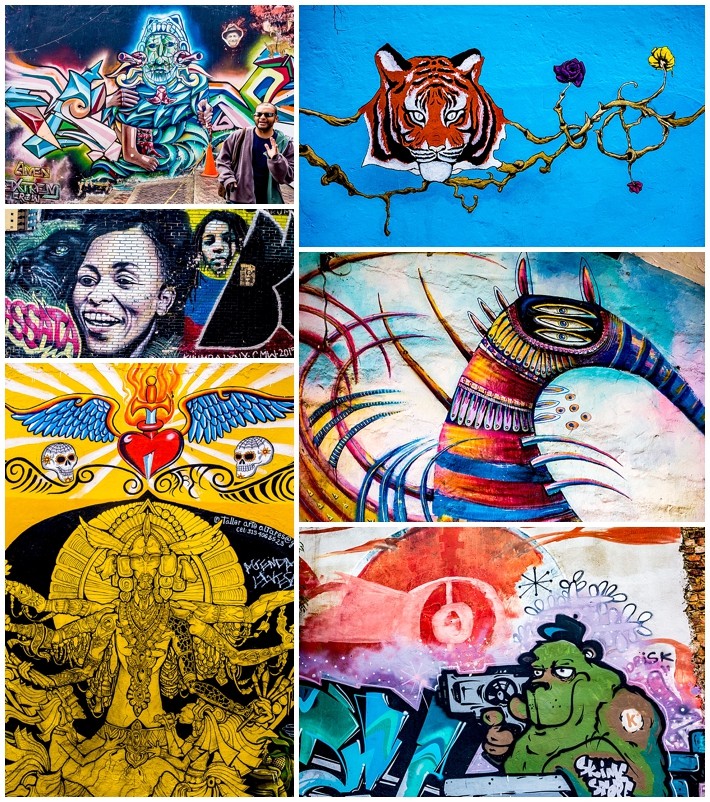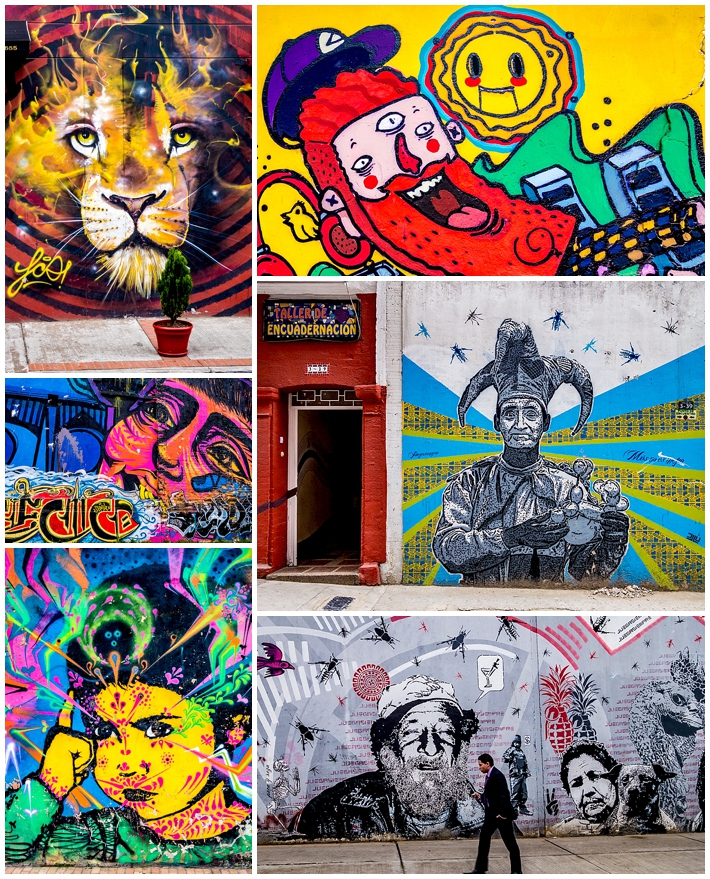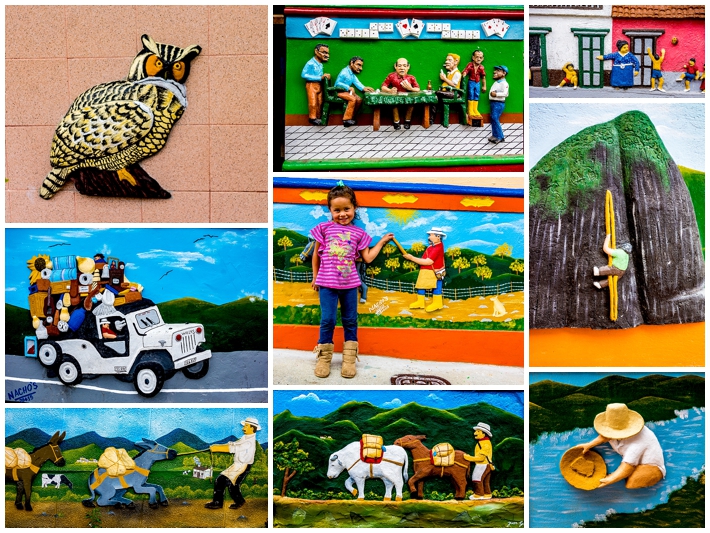 Yesterday we hired a driver to take us to Guatapé, a small town outside Medellin that we had heard was quaint. Along the way, we visited other towns –Marinilla and Peñol, In short it was a LONG tour with 6 hours of driving, 1 hour of exploring the town. Though Evelyn liked the tour, I did not think it was a good use of a day, and do not recommend it to others.
Yesterday we hired a driver to take us to Guatapé, a small town outside Medellin that we had heard was quaint. Along the way, we visited other towns –Marinilla and Peñol, In short it was a LONG tour with 6 hours of driving, 1 hour of exploring the town. Though Evelyn liked the tour, I did not think it was a good use of a day, and do not recommend it to others.
En route the smog was overwhelming. Like Bogotá, Medellin limits cars to driving on odd/even days matching the last number of their license plate. In Bogotá, most middle-income or higher people have purchased two cars to get around the limit, thus defeating the intent. In Medellin, the limit is only for 2 hours per day, so drivers simply delay their trip, as our driver did this day, picking us up half an hour later than otherwise planned. However, most of the visible smog was being generated by a heavy flow of diesel trucks spewing thick black clouds, and an overwhelming number of two stroke motorcycles doing the same.
As we drove through the lush countryside, our driver told us that it was barren a mere 5 years ago. Guerrillas had terrorized the countryside so badly that most farms were abandoned. Only in the last few years have people come back — often not the same people that left — and returned the fields back to lush farms.
Guatapé has two claims to fame. The first is its unique facades. All are created by a single family in town, and some are 3D, being constructed of concrete. Each home has them along the base of their walls, most measuring roughly 3 feet high by the width of their home or store. The home owners commission the artist, and can give direction on the desired subject matter, usually depicting their livelihood or history.
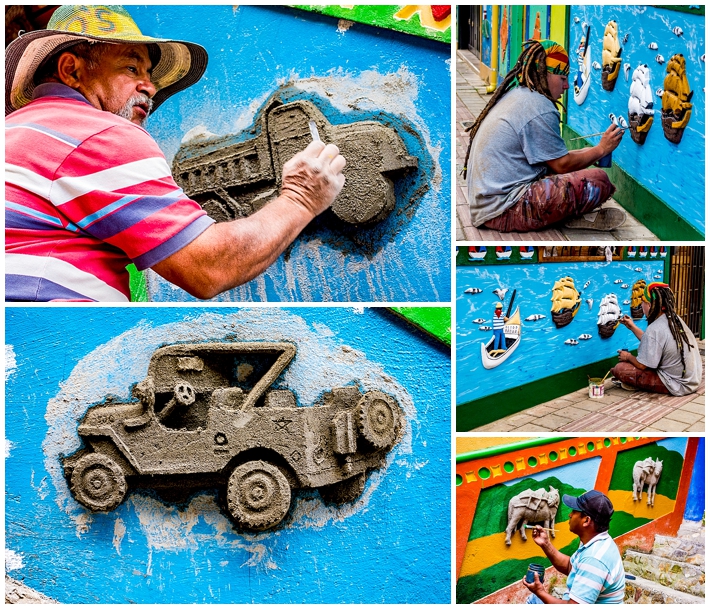 Three members of the artist’s family were busy in town when we were there. One was refreshing an existing mural (upper and middle right above), while two others were creating new concrete reliefs.
Three members of the artist’s family were busy in town when we were there. One was refreshing an existing mural (upper and middle right above), while two others were creating new concrete reliefs.
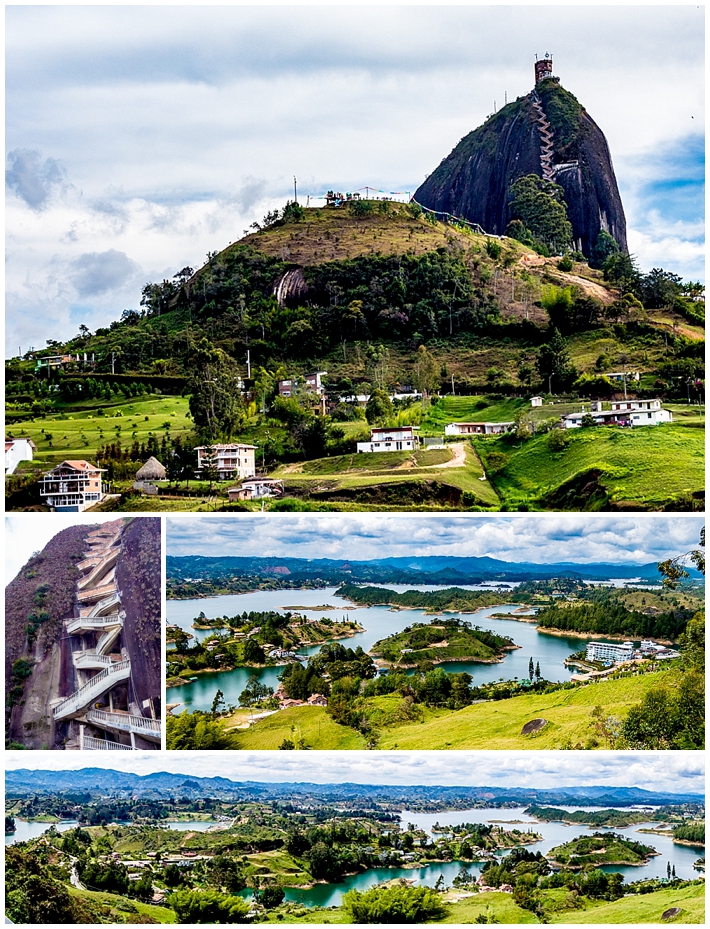 The second claim to fame of the city is the Peñol Rock — a huge basalt rock on the edge of town. You can climb the 770 steps to the top, for a reportedly stupendous view of the lagoons, though we have to take others’ word for it…
The second claim to fame of the city is the Peñol Rock — a huge basalt rock on the edge of town. You can climb the 770 steps to the top, for a reportedly stupendous view of the lagoons, though we have to take others’ word for it…
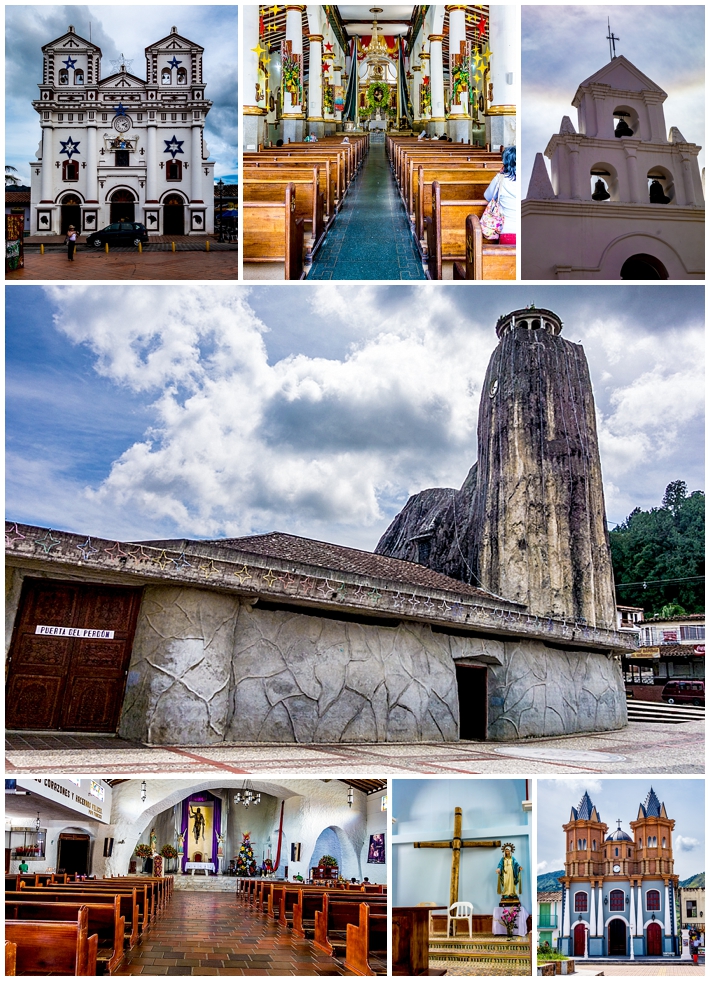 In the last 1960’s, the Colombian government decided to build a reservoir for generating power (which now accounts for 40% of the country’s electric generation), that would flood part of the city, including the main church. The government offered to rebuild the church as it was, but the local people chose to pay more to build a new church — and created the one in center above, which is supposed to be a rock similar to the Peñol Rock outside town.
In the last 1960’s, the Colombian government decided to build a reservoir for generating power (which now accounts for 40% of the country’s electric generation), that would flood part of the city, including the main church. The government offered to rebuild the church as it was, but the local people chose to pay more to build a new church — and created the one in center above, which is supposed to be a rock similar to the Peñol Rock outside town.
 Today we took a walking tour of Medellin Centro. The guide was entertaining and informative, but frankly Centro Medellin is not as interesting as many other cities we have walked. Hernán (our guide) tried to give the history of the city, while downplaying the violence of the recent past. Given that the city was considered the most dangerous in the world just 15 years ago, that made his history lessons difficult.
Today we took a walking tour of Medellin Centro. The guide was entertaining and informative, but frankly Centro Medellin is not as interesting as many other cities we have walked. Hernán (our guide) tried to give the history of the city, while downplaying the violence of the recent past. Given that the city was considered the most dangerous in the world just 15 years ago, that made his history lessons difficult.
One interesting point that Hernán made is that Colombians use religion as a soap to wash off the guilt. A hit man will go into the church to pray before a murder, asking Jesus to forgive him and to decide whether the hit will succeed or not. It is then Jesus’s decision if the murder will take place or not, not the person pulling the trigger. The churches in Medellin are the centers around which prostitution exists, and form the hub of streets for selling porn and cheap fake goods.
The Colombian government has been fighting an undeclared civil war for the past 70 years, only 20 of which were related to the drug trade. Drug money basically took the ongoing civil war and provided more guns and training, turning anti-government farmers into a paramilitary. With bounties offered on both sides (government paid for every rebel killed, and drug lords paid for every politician killed), the city was more dangerous than Beirut. In 2002, Álvaro Uribe was elected on a platform promising to quell the violence. He was known — both affectionately by supporters and derisively by others — as the “iron fist president.” Though controversial, he did manage to follow through on his main promise, and Colombia finally started on its road toward recovery and peace.
Hernán pointed out that drug money does not provide infrastructure, and Medellin’s current prosperity came from 100 years of gold mining and 30 years of being a financial center. He claimed that at its peak, drug money only accounted for 6% of Colombian GDP.
There have been peace negotiations with FARC, the largest anti-government paramilitary group, for the past three years. Of 75 negotiating points, 74 have been settled. The last point, who would serve prison time and for how long, is rumored to have now also reached an agreement. The treaty is expected to be signed by March 1, 2016, and hopes are high that the long civil war will finally be only a portion of the history books.
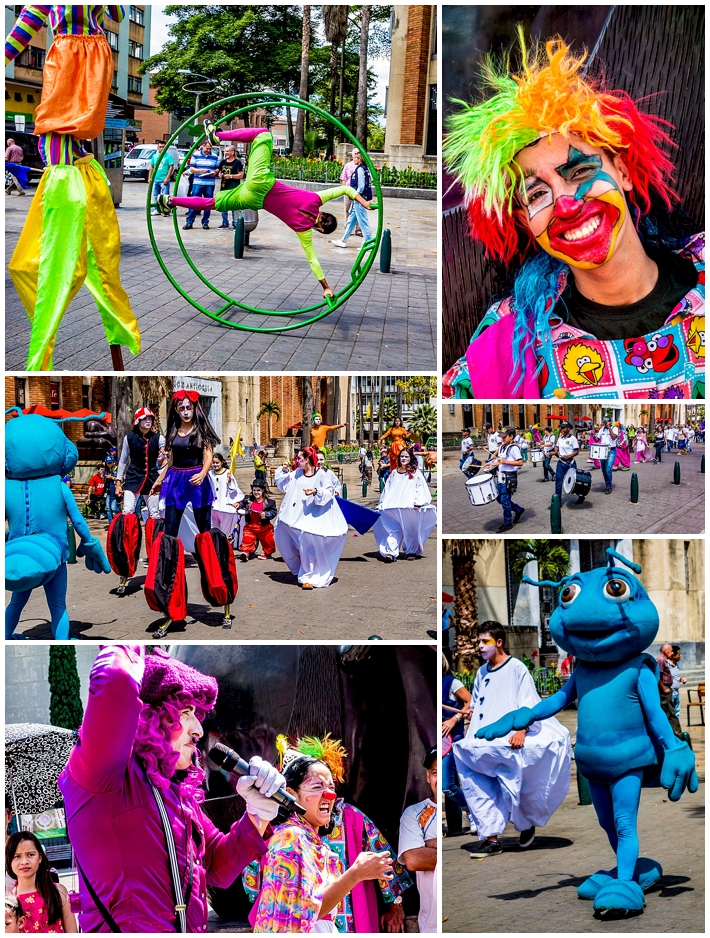 As with Cuenca, parades seem to spring up out of nowhere. However, while the parades tend to be religious in origin in Cuenca, they are more circus oriented in Medellin. This was the third such parade we saw start up in town, in as many days. We never did find out why…
As with Cuenca, parades seem to spring up out of nowhere. However, while the parades tend to be religious in origin in Cuenca, they are more circus oriented in Medellin. This was the third such parade we saw start up in town, in as many days. We never did find out why…
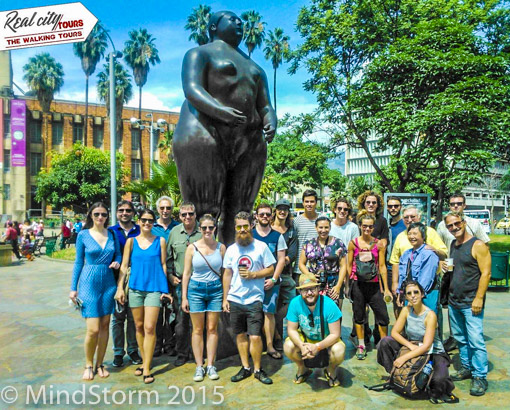 Of the 21 participants on the walking tour shown above, only one other person besides ourselves were from the USA. The rest were from Netherlands, Croatia, Australia, and other countries outside North America. English was the common language though. Look at the image (with us near far-image-right) and note how tall everyone is. We felt like midgets in that crowd, with many of the men — and even a couple women — towering over me!
Of the 21 participants on the walking tour shown above, only one other person besides ourselves were from the USA. The rest were from Netherlands, Croatia, Australia, and other countries outside North America. English was the common language though. Look at the image (with us near far-image-right) and note how tall everyone is. We felt like midgets in that crowd, with many of the men — and even a couple women — towering over me!
